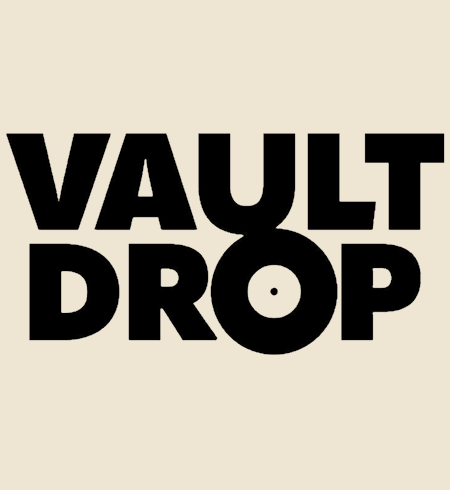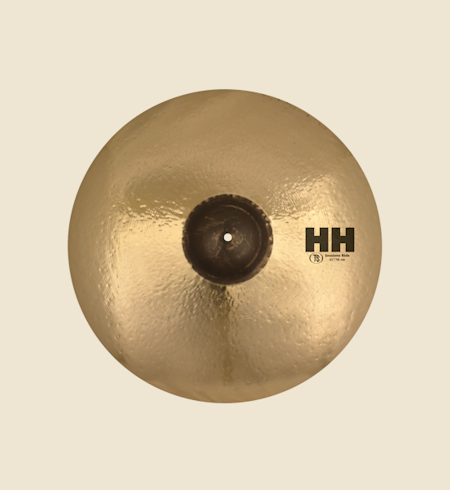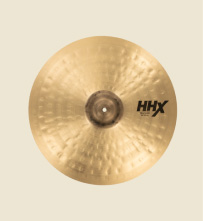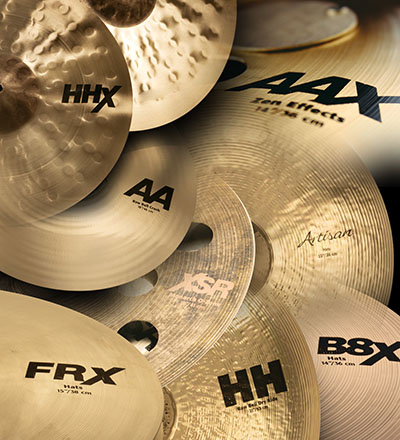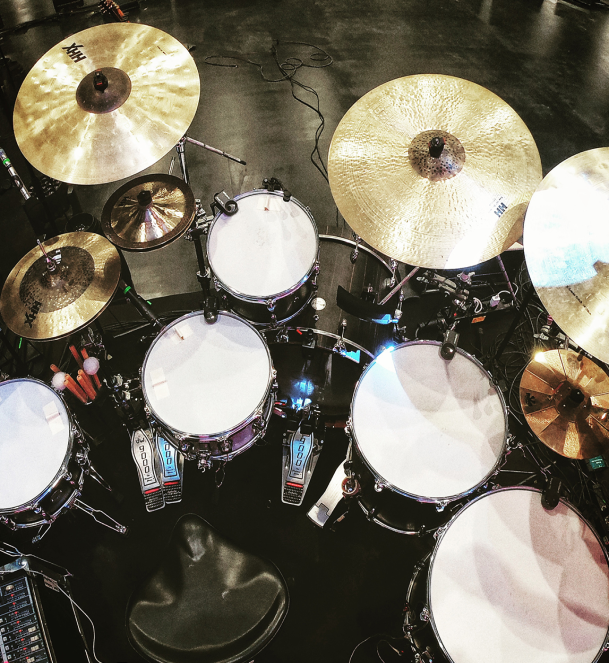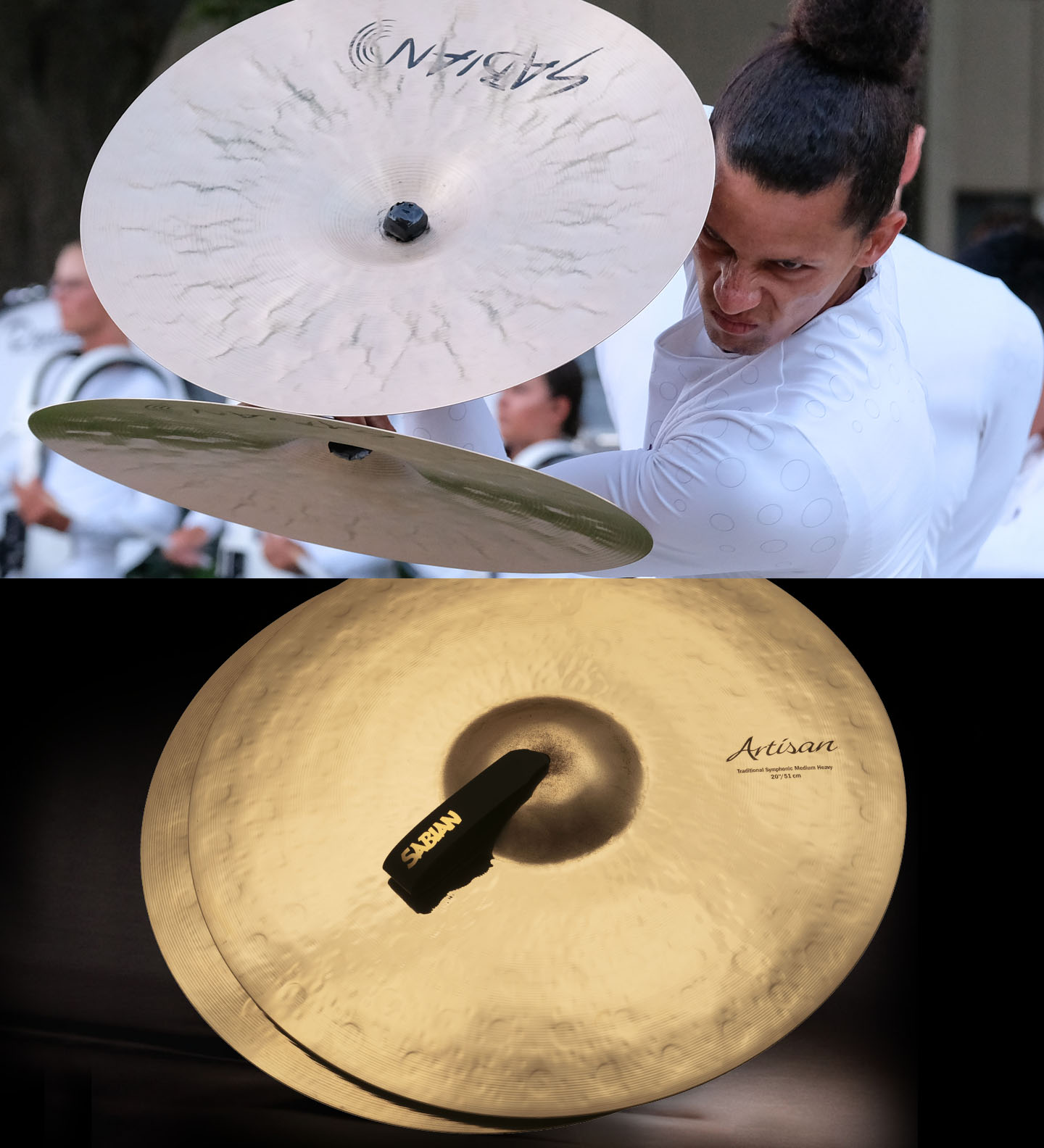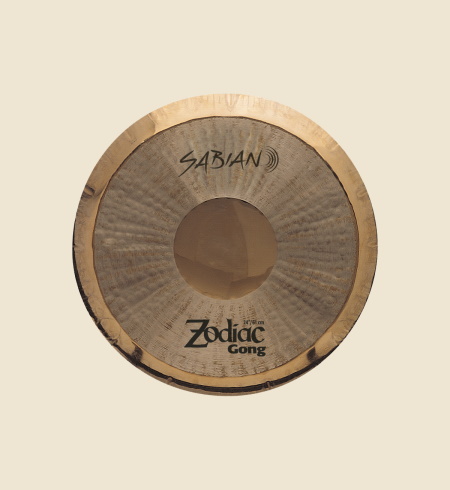FAQs
The most commonly asked questions about the SABIAN warranty program.
Does SABIAN have a warranty program?
2-YEAR WARRANTY
North America – All SABIAN cymbal series are guaranteed against defects in workmanship and materials for a period of 2 years from original date of purchase. Cymbals replaced under our North American Warranty will be shipped only to an address in the U.S. or Canada.
International – Please contact the SABIAN retailer where you purchased the cymbal for information on warranty coverage in your country.
How do I return my broken cymbal for warranty?
To obtain warranty service in North America, please contact our Customer Service department at 1-800-817-2242, or by email at [email protected]. You will be issued a Return Authorization (RMA), with the address where to ship your cymbal. Inbound shipping costs are your responsibility and SABIAN covers the shipping on the warranty replacement back to you. Before contacting Customer Service, please check the pictures on our website to ensure your cymbal may be eligible for warranty coverage. Warranty – SABIAN Cymbals
I have purchased an extended warranty from the dealer with my SABIANS
SABIAN does not offer an extended warranty, though this option is offered by some stores (possibly at an added cost). In cases where warranty service is required but the SABIAN warranty has expired and the extended warranty is still in effect, the cymbal must be returned to store which sold the extended warranty.
Do I get warranty coverage if I buy my SABIANs from another country?
Because SABIAN does not have a single global warranty policy, any warranty is applicable only in the country where you purchased your cymbal. For example: If you live in the UK and purchase a cymbal from the USA, your warranty is valid only in the USA, NOT in the UK.
If you experience problems with a cymbal you purchased outside the country where you live, please contact our Customer Service department at [email protected] for further information. Please keep in mind that in order to obtain warranty service, you will need to provide the proof of purchase, have the cymbal shipped to SABIAN Canada at your expense, and provide a US or Canadian address for the replacement cymbal (if eligible) to be shipped.
Does my replacement cymbal have a warranty?
Your replacement cymbal takes on any remaining warranty from your original purchase. So if for example you received a replacement cymbal and it had been 18 months since the purchase of the original cymbal, then you would have 6 months of warranty on your replacement cymbal.
How do I contact SABIAN if I have a question?
SABIAN
219 Main St.
Meductic, NB
E6H 2L5
Phone: 1-800-817-2242 or +1 506-272-2019
By email:
[email protected] – Customer Service
[email protected] – Artist Relations
We’ve provided answers below to the questions we are often asked about how to select a cymbal.
How do I choose the correct models for my playing?
It is important that you choose cymbals that you like but also cymbals that will work for you and you’re playing in a performance setting. Read up on who plays what (our Newsbeat magazine and this website are loaded with such information), listen to your friends, talk to other drummers develop a sense of what might work for you. Then go out and experience some sounds. Maybe you could try your friends’ cymbals or try various models at your local music store. Tapping cymbals with your finger in a store is not a good way to understand what they offer. Indeed, tap most cymbals lightly and the response will likely be more clunky metal than shimmering musicality. It is important that you ‘play’ the cymbals and get a sense of what they can deliver for you. (Bring your own sticks and don’t be shy when testing)
Cymbals are like many other things in life. Bigger is louder. Thicker is heavier. And then there are different series, each with its own sound characteristics.
HH sounds darker, with a rich tonal quality. These are soulful and funky sounding cymbals.
HHX combines Hand Hammered darkness with a touch of brightness that results in a sound that has a simmering ‘edge’. It also has ‘Tone Projection’, so the rich sound cuts through a band.
AA is a bright, explosive series. Its sounds are applicable to most styles of music, from rock and jazz to funk and pop.
XSR is a budget priced B20 bronze cymbal (same bronze as the series above) that has a bright, tonally tighter sound suitable for contemporary music.
B8X offers quality sound cymbals created to SABIAN quality standards.
Each series offers a wide range of models, sizes, weights and sounds. Select from just one series, or mix the various series to create the setup that you want to play. Try a mix of darker (Hand Hammered, HHX) crashes and brighter hats and ride (AA, AAX, etc.). There are no rules.
If you want faster responses, lighter sounds, and lower volumes, choose smaller and/or lighter models. The immediate response and decay of Sound Control crashes make these great for lower-volume accenting, though you may want to balance these (or other thin crashes and splashes) against a heavier ride.
Most players like a mix of medium-weight hats and ride with thin, medium-thin or medium crashes (not all cymbals are named by their weight; some are named by their response or design features). Heavier models are great for playing loud and hard. That’s what they’re designed for and that’s what they do best.
Are there differences between 'natural' and 'brilliant' finishes?
Looks: The most noticeable difference is the look: ‘Brilliant Finish’ cymbals are machine buffed then hand polished to a smooth, bright and shiny high-gloss look. ‘Natural Finish’ cymbals are neither buffed nor polished, remaining instead in their natural state. The buffing process of cymbals that are lathed (with ‘tonal rings’ in their surface) will smooth the tops (‘peaks’) of the grooves, creating a smoother touch and look
Sounds: While looks differ greatly, sounds between ‘Natural’ and ‘Brilliant’ cymbals may differ only slightly, if at all. The high-pressure buffing removes a very thin layer of metal (a 16″ cymbal may shed approx. 1 to 2 ounces), but this has little if any noticeable effect on the sound. The possibility of difference has more to do with the surface of the cymbal being smoothed by the friction created by the pressure of the buffing. If the cymbal is lathed, the buffing will smooth the high edges of the grooves, rounding them off and thereby reducing the depth of each groove. Because sound vibrations move through the grooves, from the low valleys to the high peaks (where they generate the ‘lows’ and ‘highs’ that comprise the tone), smoothing the groove ‘peaks’ creates a smoother, glassier, even warmer response. The degree of sound difference – often only minimal – varies from cymbal to cymbal, yet many players do make their choice based on this difference… and the ‘Natural’ or ‘Brilliant’ looks of the cymbal.
How does the size of the bell (cup) affect the sound of a cymbal?
The bell works like a resonator for a cymbal. The larger the bell, the more open the sound and longer sustain. There are various bell sizes and they all play integral roles in defining the response characteristics of the cymbal.
Examples:
Crash models: 16″ AA Medium Crash and 16″ AA Bright Crash – Basically the same weight, but the Bright Crash has a larger bell. That gives it a louder crash and more sustain than the Medium Crash, which is quick to respond and faster to decay.
Ride models: 21″ AA Dry Ride has the same (smaller) size of bell found on a 20″ ride. A 21″ Medium Heavy Ride normally has a larger bell. While this larger bell increases the output of the Medium Heavy model, the smaller bell of the Dry Ride reduces overtones and ensures cleaner stick definition.
Another good comparison is a Flat Ride and a Medium Ride. The Flat Ride, which has no bell, is all stick sound with very little volume and no sustain. The Medium Ride, with its mid-sized bell, has a good stick response but the bell increases the overtones and extends the sustain.
How does thickness and weight affect cymbal sound?
The thicker the cymbal, the heavier it will be and the brighter and louder the sound. Compare a 16″ Bright Crash and a 16″ AA Rock Crash. Both are basically identical in shape, with the same bell size. The heavier Rock Crash is brighter sounding, has greater sustain, and is louder; it’s everything a ‘rock’ drummer would want to play. Most drummers find it best to gauge their needs by using medium weight cymbals as a starting point. From there it is possible to identify the need for lighter or heavier models.
What differentiates the AA and AAX Series?
When SABIAN launched in 1982, it had two series; AA and HH (now called Hand Hammered). AA is a B20 bronze cymbal (80% copper, 20% tin and traces of silver) that is pressed into shape; machine hammered with small-peen dimpling, and lathed using wide blades. Its sounds are bright, musical, explosive … very open and full.
AAX is quite a different cymbal and concept. It is also a B20 bronze cymbal, but that is where the likeness ends. AAX receives a jumbo hammering treatment and pinpoint lathing. The first ‘innovative’ series created by SABIAN (and the catalyst for SABIAN’s reputation for award-winning innovation) AAX features an exclusive ‘Auto-Focus Response’ feature. Tap an AAX with your finger or beat it with a stick, the response automatically focuses on the true, fundamental sound of that cymbal. Unlike other cymbals (especially before the advent of HHX, etc.) AAX responds with total accuracy at all dynamics from low to high volumes. Other cymbals, including AA, have a ‘response threshold’. This means they sound best once they reach a certain volume. With AAX you can play the sounds you like at any volume. As for those sounds, AAX has a glassier, shimmering response that is bright, clear and focused.
Can hand cymbals be used on a drum set?
Yes they can. Although the majority of these cymbals have a slightly different shape they can be used for kit playing.
Can I arrange to pick cymbals at the factory?
This type of service is not available.
Where can I find a list of SABIAN dealers in other countries?
SABIAN has a feature on the SABIAN website called Find a Dealer. With this you can search for a dealer in your area by name, city or country.
Does SABIAN recycle old broken cymbals for credit towards new ones?
SABIAN does not have such a program at this time.
Common questions and answers regarding cymbal care.
How can I avoid cracking a cymbal?
Cracking/breaking can result from a number of factors, most of which are avoidable. There are different types of cracking ranging from a break on the edge to cracks in the groove lines on the bow of the cymbal or around the base of its bell. Don’t be too quick to blame the cymbal; cracks like these are almost always the result of something else.
Here are some tips to avoid problems:
Play cymbals that are suitable for your playing style, sound and volume Don’t play small, thin cymbals if you’re playing hard in a high-volume rock band. Choose thicker, heavier models.
Use the right sticks. Heavy sticks and light cymbals do not make a good mix.
Use a cymbal sleeve and small felts (top and bottom) to protect your cymbal from damaging metal-on-metal contact with the stand.
Do not over-tighten the wing nut on the stand; let the cymbal move. Too tight and the cymbal will ‘choke’ and vibrations – unable to release anywhere – may crack the metal.
Do not over-angle cymbals. Let them sit flat or angled slightly toward you. Too much of an angle restricts movement and can lead to cracking around the base of the bell.
‘Slice’ across the edge of your crashes. Playing directly down and into the cymbal (straight-arming) can crack your cymbals. If your cymbals are ‘chewing up’ your sticks, chances are you’re playing them incorrectly. Remember: SLICE! It may be awkward at first but you’ll get a better sound and extend the life of your cymbals.
Protect your cymbals when they’re off the stands. Never leave them leaning against gear or flat on the floor; they’ll get knocked over, their edges will get nicked (which often leads to cracking), or they’ll get stepped on. Bag them individually (or separate them with a cloth or towel) then store in a cymbal bag or hard-shell case. Ideally the bag will have divider pockets and the case will have a center bolt to minimize damage from movement.
Can a cracked cymbal be repaired?
WARNING: Your warranty will be void if you take the following actions. Only attempt repairs if your warranty has expired.
There are popular methods to stop/delay a crack. Their effectiveness can be determined by the points noted at the bottom of this segment.
Problem: Crack running along tonal grooves
Solution: Drill small holes at either end of the crack
Problem: Crack on cymbal edge and running toward bell
Solutions: Thin Cymbal -Using a pair of metal cutters, make a V-shaped cut to remove the entire crack. Sandpaper the edges so they are not sharp. Heavy Cymbal – Using an electric drill, cut a small hole at the end of the crack. Sandpaper the edges so they are not sharp
Problem: Crack (running along tonal grooves or running toward bell) near edge of cymbal
Solution: Have a professional machine shop cut down the size of the cymbal, removing the cracked portion in the process. Use sandpaper to smooth the new edge around the cymbal
This solution can change the sound of the cymbal but will remove concern about the crack
Note:
Use sandpaper to smooth all rough edges. Do not use an electric sander as friction from these generate heat that may further damage your cymbal
Solutions must be implemented as soon as the crack is noticed
A cracked cymbal is often the sign of something wrong with how it is mounted/angled on a stand and how it is played. It is always worth reviewing your cymbal stand to ensure it has appropriate felts, a rubber/plastic tube over the center rod; that the angle of the cymbal isn’t too extreme, that it is not bolted down too tightly (it should have freedom of movement when played), and that it is not being played excessively hard (especially for thin models)
Does SABIAN recycle old broken cymbals for credit towards new ones?
SABIAN does not have such a program.
What should I clean my cymbals with?
‘SABIAN Safe and Sound Cymbal Cleaner’ is specially formulated for use with all SABIAN cymbals… all series, all finishes. We do recommend that you avoid cleaning the logos, instead cleaning around them. Wiping the logos with any cleaner will eventually remove the ink. If is important that the directions on the bottle be followed closely, and the bottle shaken vigorously for at least 30 seconds, as the compounds can settle on the shelf.
My cymbals are starting to rust, why?
What you are describing is oxidation. This occurs when moisture (water or other liquid) is left on a cymbal. This moisture, the copper and the air combine to discolor the metal, resulting in dark brown or green marks. Keeping your cymbals dry and regular cleaning will help prevent this. Once oxidation starts, it is difficult to stop it.
Common questions we are asked about endorsements
Where can I find a list of SABIAN endorsers and their setups?
A good representation of SABIAN players – many including set-ups – appears on this website.
When viewing the set-ups, it is important to understand that what you see may be one of several set-ups used by that player. Most drummers and percussionists have a variety of cymbals they select from depending on the performance situation. What is used in the studio may be quite different from the set-up used for live performances. And moving from one style of music to another may also call for different series, sizes and models. Different venue sizes – a small club versus a major stadium – can also require the use of different models.
What is an endorsement?
For the purposes of this FAQ, an endorsement is defined as the expressed or implied recommendation, by a popular and/or well-respected drummer, of a particular manufacturer’s product, product line, or service(s).
What is its purpose?
Endorsements are designed to increase product or brand-name awareness (and ultimately, sales) through the use of a familiar spokesperson.
Is the drummer the endorser, or the endorsee?
These terms are often used interchangeably. To be accurate, the drummer is the endorser, since it is the drummer who does the “endorsing” of the manufacturer’s product. The manufacturer would therefore be considered the endorsee, although that’s a seldom-used reference.
Who can get an endorsement agreement?
Any drummer who has good exposure to the manufacturer’s target buyers, either as a personality or through their artist affiliation, is a candidate for an endorsement agreement.
What are the benefits to the endorser?
In exchange for their endorsement, the drummer can expect a minimum “consideration” in the form of discounts on the product endorsed (and possibly on other products from the manufacturer). Based on the level of exposure the drummer can provide, the agreement may include free product, however there is generally a limit to the amount and frequency of such consideration. Other agreements may include exchanging old product for new, and in some instances, product is simply loaned as necessary. The specific product may also govern the consideration. That is, a drummer is more likely to get free sticks from a stick manufacturer, than to get free drums from a drum manufacturer. The amount and type of consideration is usually proportionate to the marketing value of the endorser to the manufacturer.
Another valuable benefit is the “support” offered by the manufacturer. An endorser will enjoy better pricing, and usually faster service than at almost any retail store. This is especially important for the traveling drummer, where the product may be unavailable in local stores.
The drummer may also have their name and/or photo used in the manufacturer’s product literature and advertising campaigns.
Occasionally, the drummer may be involved with R&D (research and development) regarding the manufacturer’s products, and may become an integral part of the manufacturing process.
What is the benefit to the manufacturer?
Essentially, it is the promise of increased sales. Even musical manufacturers are in business to sell their products or services and, like any other business, generating revenue is a prime objective.
What does the manufacturer expect from the endorser?
Since the manufacturer seeks exposure via the endorser, the endorser is expected to be seen using, and/or pictured with, the product. Sometimes clinics are arranged so that the endorser can help spread the word on a more personal level. For endorsers who do recordings, a ‘thank you’ or mention in the liner notes is customary. Traveling endorsers may be asked to accommodate manufacturer employees or representatives at performances. The endorser may be asked for R&D (research and development) input on the manufacturer’s products. Schedules permitting, the endorser may be asked to demonstrate and represent the manufacturer’s product at trade shows or conventions such as NAMM and PASIC. And of course, the endorser is generally expected to say nice things about the product and manufacturer.
Does a manufacturer ever approach a drummer for an endorsement?
Yes. If the manufacturer determines that the drummer may benefit the marketing strategy.
Can an unknown drummer get an endorsement agreement?
Sometimes a manufacturer will sign a drummer who they believe has the potential for exposure. Some manufacturers have special programs aimed at non-professionals, an example of which is the Pro-Mark Sticks “Not Yet Famous Drummers” promotion from the early ’90s. The marketing angle is the same either way – the manufacturer wants the up-and-coming drummers to get where they’re going, while using the product.
How does one approach a manufacturer?
A letter or phone call to the artist relations person at the company will get the ball rolling. They will probably require a promo package, and then determine if the drummer can offer the kind of exposure that will help promote their product. Rejection letters are common, as are “B level” endorsements which may offer only a moderate discount on product. The choice is the manufacturer’s when it comes to how they handle their marketing, and it’s just not possible for them to enter into agreements with every drummer who asks.
Are endorsements forever?
Sometimes the specifications or quality of a product change and it no longer meets the drummer’s needs; or, the drummer discovers a preferable brand; or, the manufacturer ceases production of the endorsed product, or goes out of business. Barring satisfactory resolution with the manufacturer, these are among the valid reasons to discontinue endorsing a particular product or brand. The manufacturer also has the right to terminate the agreement if the endorser violates the terms of the endorsement agreement, or if it is determined that the endorser no longer possesses suitable promotional value. A typical agreement is reviewed annually.
Bermuda's recommendations:
Seek to endorse only those products that you would use even without an agreement. Avoid being one of those drummers who takes whatever they can grab, whether they like or intend to even use the product. Your credibility as a spokesperson is important, especially once you seek to endorse additional products and manufacturers. Reputations and relationships possess tremendous value, and nobody will tolerate an endorsement-hopping “drum whore”.
In certain broadcast or performance situations, it is not always possible to use the endorsed product. When that happens, you should certainly not be seen using the competitor’s product! Mask the competitor’s name so it is not visible. Avoid being pictured with a non-endorsed brand, and don’t make the mistake of thanking non-endorsed competing manufacturers in the liner notes! Endorsement agreements are almost always exclusive, and your credibility and contract could both be lost.
In addition to being a business arrangement, the relationship between you and the manufacturer is also important on a personal level. Never whine about how you’re not pictured in the latest ad, don’t make excessive product requests or other demands, and respect the people who are accommodating you. In this business, it’s the nice guys who finish first.
Bermuda's recommendations:
Seek to endorse only those products that you would use even without an agreement. Avoid being one of those drummers who takes whatever they can grab, whether they like or intend to even use the product. Your credibility as a spokesperson is important, especially once you seek to endorse additional products and manufacturers. Reputations and relationships possess tremendous value, and nobody will tolerate an endorsement-hopping “drum whore”.
In certain broadcast or performance situations, it is not always possible to use the endorsed product. When that happens, you should certainly not be seen using the competitor’s product! Mask the competitor’s name so it is not visible. Avoid being pictured with a non-endorsed brand, and don’t make the mistake of thanking non-endorsed competing manufacturers in the liner notes! Endorsement agreements are almost always exclusive, and your credibility and contract could both be lost.
In addition to being a business arrangement, the relationship between you and the manufacturer is also important on a personal level. Never whine about how you’re not pictured in the latest ad, don’t make excessive product requests or other demands, and respect the people who are accommodating you. In this business, it’s the nice guys who finish first.
